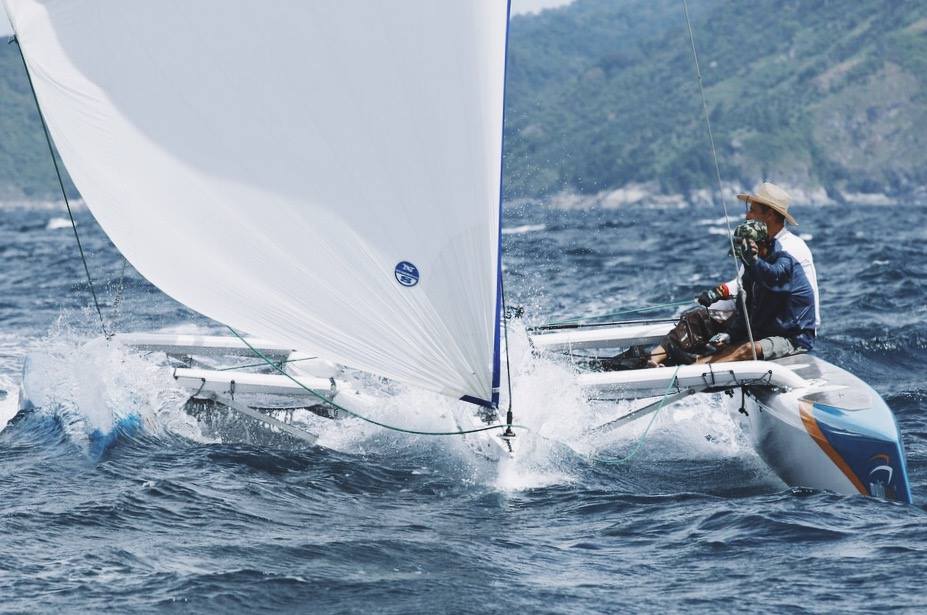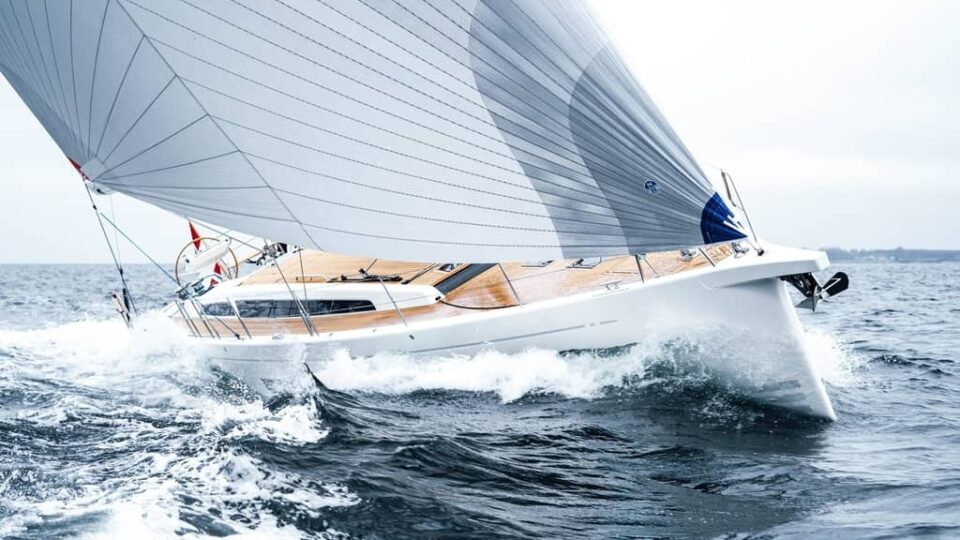Names of Sails on a Sailboat
Are you a beginner sailor and want to get acquainted with the names of the sails? Are you an experienced sailor and want to learn more details about the sails on a sailboat? Then this article is written for you! Sails form a crucial part of the sailboat because without them, there’s no starting up. For that reason, there are many details about different types of sails concerning their utility, functionality, fabrication materials, and performance. Simply put, each sail serves different purposes when out on the water. Since the sail is the engine of your sailboat, in terms of it being the basic source of propulsion, it’s important to know when best to use either type of sail and why.
Types of Sails on a Sailboat
So, in order to better explain the types of sails, let’s look at their characteristics. The first important distinction between sails is their placement. Generally, the mainsail is placed aft of the mast, which means behind. On the contrary, the headsail is in front of the mast. There are also other sorts of sails that are used for specific conditions. These can be the spinnakers or balloon-shaped sails for downwind use. The second important distinction for the sails is their functionality. The specialized sails have different functionalities and are used in different sailing circumstances and weather conditions. A rule about sails is that large sails are appropriate for downwind use, whereas small sails are good for upwind use. Moreover, large sails perform better on weak winds while small sails are good for strong winds.
The Parts of a Sail and its Shapes
- Head: This is the top of the sail.
- Luff: The forward edge of the sail.
- Leech: Back edge of the sail.
- Tack: The lower front corner of the sail.
- Clew: The bottom back corner of the sail.
- Foot: Bottom of the sail.
There are two sail shapes, the fore-and-aft rigged sails, and square-rigged sails. Nowadays, fore-and-aft sails are more popular, have better performance and maneuverability. To grasp the idea square sails are the ones that Vikings had on their ships and are good at sailing downwind because they run from side to side. But they’re not suitable at all when sailing upwind. On the other hand, a fore-and-aft sail is tied from the front of the mast to the stern and is much better at sailing upwind.

Also Read: What is Sailboat Rigging?
Types and Names of Sails
There are a lot of reasons why you’d want to put one sail over another, but the most important thing to remember has to do with the point of your sail and the wind strength. These points help you understand how your sailboat generates wind power. These points of sail include: into the wind (in irons), beam-reaching, broad-reaching, close-hauled, close-reaching, and running. They all go from windward to leeward and are symmetric from port to starboard. So, let’s get to the point and see the names and explanation of each sail:
- Mainsail: The large sail behind the mast which is attached to the mast and the boom, is called the mainsail. Mainsails cover a lot of surface area concerning incoming winds and by doing that they don’t need very strong winds to provide forward propulsion on a sailboat.
- Headsail or Jib: The small sail placed in front of the mast, attached to the mast and forestay (ie. jib or genoa), is called the headsail. Headsails are smaller than mainsails, thus their surface area is smaller. As a result, they can’t catch the same wind as a mainsail does. However, this is important because in case that the current wind is strong and the mainsail has been enough trimmed, being able to remove the mainsail and depend on the headsail alone, is a good strategy in order to reduce speed.
- Genoa: A genoa is like a large jib and it’s attached to the front of the forestay, like a headsail. When you use a genoa sail then you are expecting light to medium winds. Also, your sailboat would be somehow in a rush point of sail, meaning that the wind comes directly from the rear. Moreover, the surface area of a genoa sail is quite large, so it’s important to use it when winds are relatively low.
- Spinnaker: These downwind sails are symmetrical which makes them more sensitive to the reaching points of the sail and therefore more suitable for the running point of sail. Spinakkers are lighter than other types of jibs, and they don’t cover the mast like a genoa sail. Moreover, they remain unattached to the forestay and stretch out toward and past the bow of a sailboat.
- Gennaker: Gennakers are a mixture of genoa and spinnaker sails. There are small and big gennakers and both are downwind sails. They aren’t as symmetric as a spinnaker and aren’t attached to the forestay like a headsail. Furthermore, the gennaker sail is able to take on a more flexible point of sail while taking advantage of softer winds.
- Drifter Reacher: A drifter is a light air sail, and it’s basically a larger genoa for use in light winds. Its extra sail area offers better downwind performance than a genoa. It’s mostly made from lightweight nylon.
- Code Zero Reacher: This sail is a type of spinnaker, but it looks like a large genoa. However, code zero is designed for better reaching which makes it much flatter than the spinnaker.
- Windseeker: This sail is small, and it’s designed to guide light air onto the lee side of the mainsail. Moreover, it’s tall and thin and ensures a smoother flow of air.
Sail and Mast Configurations
Now that you got an idea of the different types of sails on a sailboat, it would also be an advantage to know how these types of sails are related to the configuration of a sailboat’s mast. There are numerous combinations when it comes to sails and mast configurations, let’s see some of them!
- Cat: A cat is similar to a dinghy and has one mast and one sail. The mast is located at the bow of the sailboat.
- Sloop: The sloop has the classic single mast and a double sail setup. The headsail can be different kinds of jibs, is connected with the forestay on the mast, and runs all the way up to the mast.
- Fractional Rig Sloop: A fractional rig sloop is different from the sloop because its forestay doesn’t reach the top of the mast. Its headsail is restricted to a fractional amount of space and this means that less wind can be captured, therefore the speed of the sailboat is reduced.
- Cutter: Having two forestays on the mast and cutters that are able to house two headsails this setup allows easy cruising because it offers a wide combination of points of sail for different strengths of wind.
- Ketch: Just like a sloop the ketch has a mast that enables the mainsail and headsail to a full range forestay. However, it also has a smaller mast between the mainmast and the stern of the sailboat.
- Schooner: A schooner is when a sailboat has two or more masts but it has a couple of sails to manage. A schooner’s aft mast is taller than the forward mast and sometimes a schooner can have up to six masts.
Names of Sails on a Sailboat – Summary
So, how many types of sails are there? In general, sailboats have one mainsail and one headsail. The rigging also affects the types of sails you can use. As we’ve explained before, the mainsail is a fore-and-aft Bermuda rig. Then, for a headsail, we use a jib or genoa. Most experienced sailors use extra sails to ensure better performance for their sailboat. For example, the spinnaker (a common downwind sail), the gennaker, the code zero (for upwind use), and the storm sail. Keep in mind that every sail has its own use and performance. Want to go downwind fast? Use a spinnaker. Don’t just raise any sail you think suits you best and go for it! It’s of great importance to understand the functionality, use, and performance of each sail.
